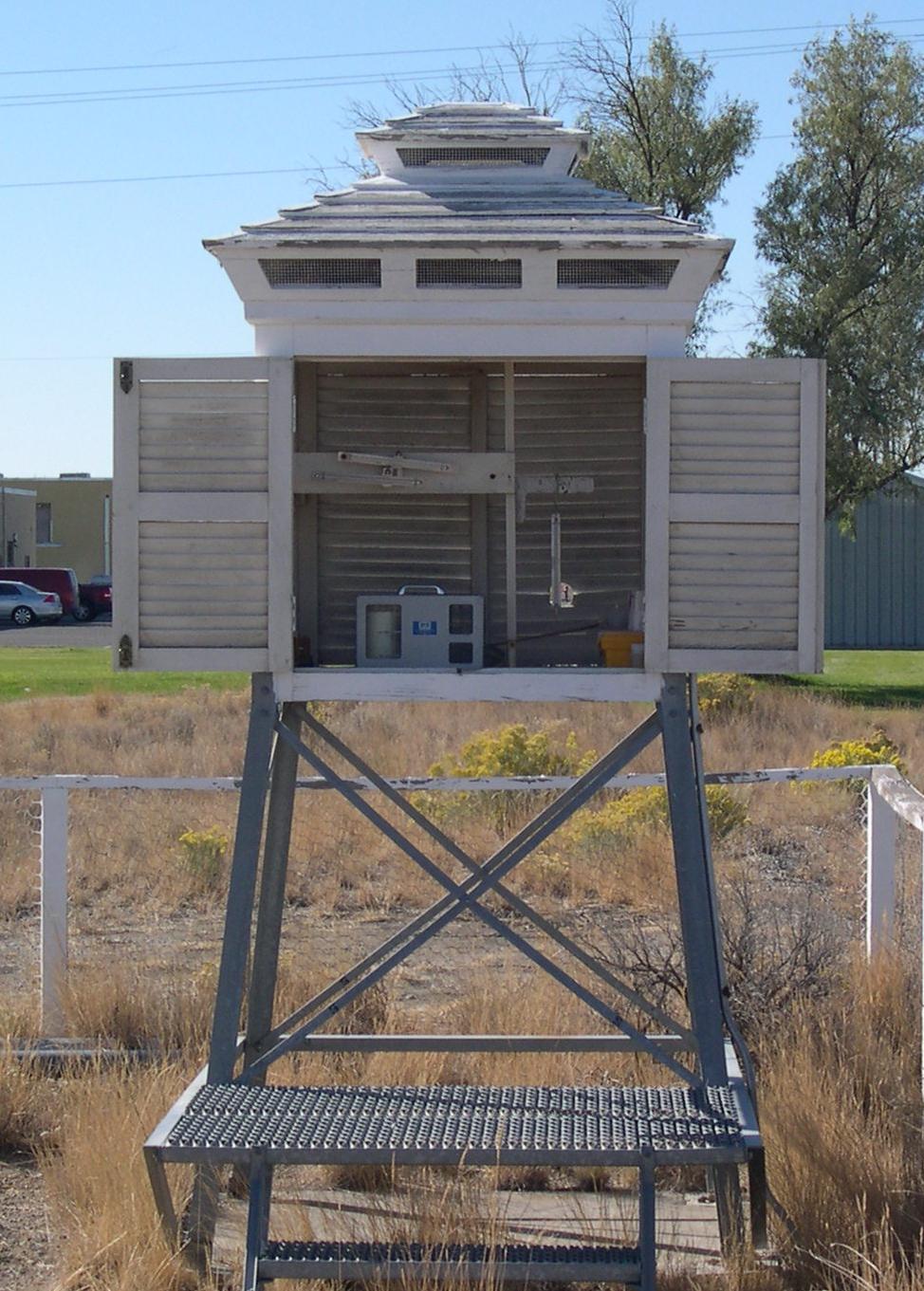|
The weather station at CFA, installed in 1949, was the first meteorological observation station established at the Idaho National Laboratory (INL). It is the longest continually operating station on the INL. The dataset collected from this station is known as thermoscreen data because the air temperatures were recorded on a thermograph located inside a thermoscreen (also known as a Cotton Region Shelter). The air temperature graph was changed weekly. Daily maximum and minimum air temperatures were interpolated from the thermograph and air temperatures from the co-located CFA NOAA/INL Mesonet station. In 2010, the thermograph was discontinued which allowed the air temperatures at the CFA NOAA/INL Mesonet station as the official CFA Thermoscreen temperatures.
Daily precipitation, snowfall, and snow depth are also included in the thermoscreen dataset. Precipitation is collected in a rain gauge located about 15 ft. away from the thermoscreen and is manually measured weekly. Daily total precipitation is interpolated from the weekly total using the nearby NOAA/INL Mesonet rain guage at CFA. Snow depth is measured manually at the same time as precipitation and interpolated to a daily depth. Total daily snowfall is estimated using the amount of precipitation recorded, temperatures at the time of precipitation, and the INL weather camera. This dataset is what compromises the NWS cooperative observer station known as Idaho Falls 46W (or IDF 46W). The data from IDF 46W are also included in NOAA�s National Climate Data Center (NCDC) database.
|

Thermoscreen (Cotton Region Shelter).
|

